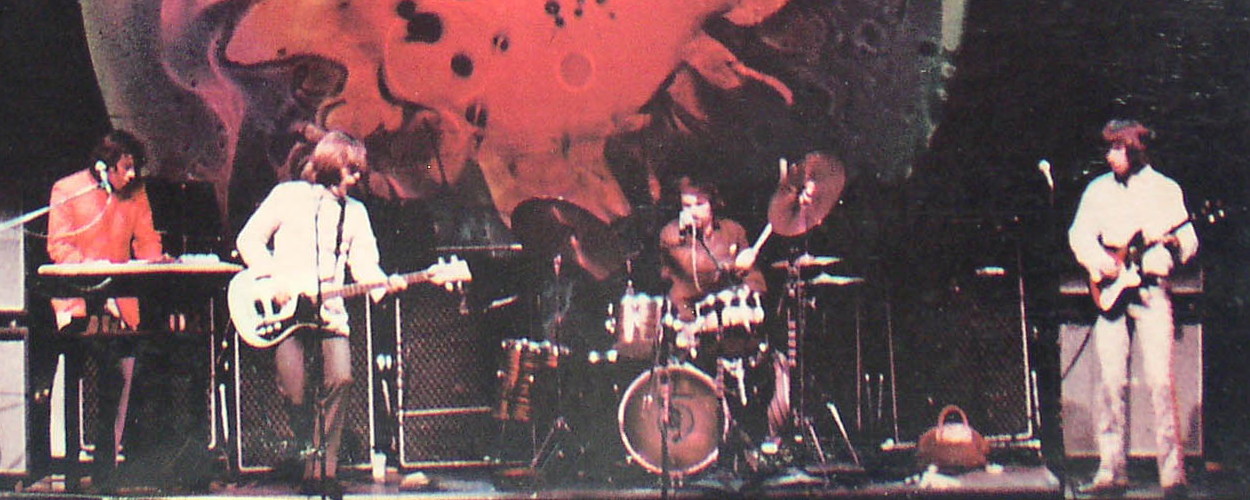Please join us at Spectrum for the 46th anniversary of Iron Butterfly’s immortal hit In-A-Gadda-Da-Vida: Theme and Variations! Organized by Hans Tammen, this evening features New York’s boldest downtown artists with their very own take on this music. As Prof David Hyman (Lehman College) observes: “These versions of In-A-Gadda-Da-Vida are inextricably bound and unavoidably independent; freed from the tyranny of the original, they represent co-equal expressions of sonic textualities, celebrations of inconsistencies and messy vitalities, explorations of digressions, poachings and appropriations as diverse as the musicians that choose to express themselves through the song’s focalizing tropes.” See some of the contributions on the bottom of this page!
In A Gadda Da Vida: Theme and Variations Party!
Saturday, October 25th, 2014, from 8pm on
Spectrum – https://www.facebook.com/spectrumNYC
121 Ludlow Street, #2, New York, NY 10012
Admission: $15/$10
With music, sound and video by Ursel Schlicht Trio, Kurt Ralske, Jonathan Wood Vincent, Briggan Krauss’ Micro Titans with John Mattam, Laura Cromwell and Brittany Anjou, Michael Lytle, Izzi Ramkissoon, Dafna Naphtali, Andrew Drury, Avram Gleitsman, Lukas Ligeti, David Simons, Ras Moshe, Gisburg, Loui Terrier, David Kramer, David First, Daniel Belquer, Thomas Martinez, Katya Naphtali, Nick Didkovsky, Cristian Amigo, Langdon Crawford, David First, Francois Grillot, Hans Tammen’s Third Eye Electric Band, Smooth Jazz for a Smooth Planet, The Gaddadelics, a lecture by Prof. David Hyman, and many more.
Lecture by Prof. Dr. Hyman:
Like a classic story or viral joke, the psychedelic proto-metallic riff/jam blend that is Iron Butterfly’s In-A-Gadda-Da-Vida demands to be retold. But there is a taxonomy of retellings whose range can be broadly traced as residing between the poles of the cover and the version. The cover aspires to reproduction; it pays homage to the cult of the perfection of the original as a Platonic form to emulate; its bywords are accuracy, similarity, correctness, orthodoxy. The version aspires to multiplicity. The original is not fixed point of reference as much as fluid text: trigger, provocation, inspiration for diverse variants and radical revisions. Judged by the standards of the cover, these versions are unorthodox, even heretical.
But here we run up against the limits of our binaries. For, heterodox as they are, even the most radical versions are all still recognizable as variations of the same song. Their difference is ineluctably bound to this identity, this essential In-A-Gadda-Da-Vida-ness. It seems that this brings us to a quandary: how are we to view this identity as rooted in anything other than the orthodoxy of the original? In this light, it is worth remembering that, for the pre-Christian Greeks, the opposite of heterodoxy was not orthodoxy, but homodoxy. Seen this way, identity is not measured by approximating the “right” version so much as by whether or not versions resonate closely enough to each other to be perceived as cognates. The notion of orthodoxy itself becomes problematic, a vestigial remnant of an inoperative yoking of the notions of the cover and the version.
The versions of In-A-Gadda-Da-Vida are thus inextricably bound and unavoidably independent; freed from the tyranny of the original, they represent co-equal expressions of sonic textualities, celebrations of inconsistencies and messy vitalities, explorations of digressions, poachings and appropriations as diverse as the musicians that choose to express themselves through the song’s focalizing tropes.
Nick Didkovsky

